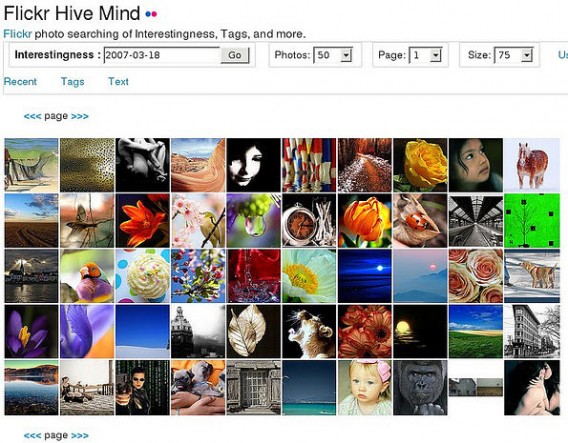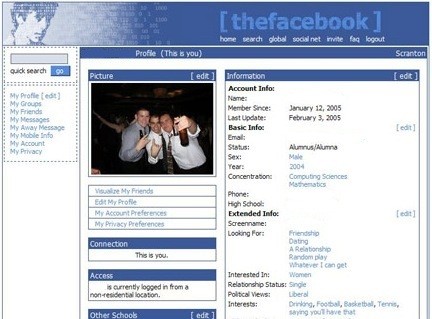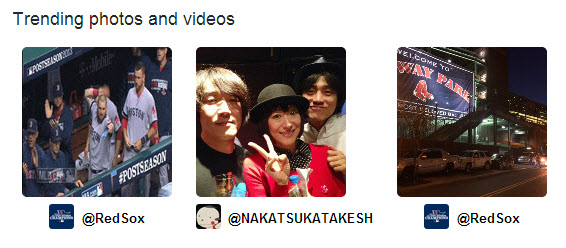Online social platforms had a massive shift over recent years to become mainly visual, and photos are the obvious way for us to divulge every possible detail of our personal and social lives.
The result? Selfies and countless pictures of food (admittedly, I’m guilty of participating in the latter).

Okay, maybe that’s not the only result. But this evolution has definitely changed the type of photos we choose to share. I take a look at how social photo sharing has evolved to become its own category of social network, changing what we post and how it reflects who we are.
Utilitarian photo sharing
One of the first and most useful functions of photo storage websites was simple: the possibility to easily and quickly store your photos online and share them with family and friends. Sending large photo files through email was a tedious process; websites that could host all your photos in a private or public album for you to share with family and friends was a practical solution for this problem.
Photo sharing sites like Flickr and Picasa are simple but effective, letting you share albums publicly or privately, for free and with a ton of space.

The main purpose of these sites, initially, was simply to share photos so that your friends overseas or your family across the country could look at or download them. The better photographers out there could show off their skills, too. These sites required registration but didn’t require you to create an accurate profile, and while Flickr would let you leave comments, social contact was limited.

Flickr (source)
True, these sites, and many others like them, were good for practical purposes. What they lacked at the time, but have since added, was the social aspect that some then-unknown, soon to be unforgettable social networks were starting do very well.
Social sharing: From what you’ve done…
Social networks: MySpace and Facebook
As the first social network in the style we’ve become accustomed to, MySpace was less about sharing photos and more about connecting with people, blogging, and eventually, a total shift towards music. While photo sharing never became the central feature of MySpace, it was one of the first widely used online social networks, meaning it offered a small preview of this platform’s potential for photo sharing in more than just a utilitarian way- sharing photos that told people something about you.

The original MySpace featuring everyone’s first friend, Tom
The real pioneer, however, was Facebook, emerging in 2004 as a modest social network letting college kids connect and share status messages, comment on each other’s walls and inevitably, share photos. The difference with Facebook as a social network was assigning your real identity, since its purpose was to connect with people you already knew.
Sharing profile photos and albums became a central feature of self representation on the social network, although its first incarnation was meant only for college students, and the photos that people were sharing tended to be of drunken college kids at wild frat parties.

The original Facebook profile (source)
As the social network expanded its user base, so did the variety of photos being shared. People tended to upload albums of their trips, special occasions or major life events. Coincidentally, people quickly became bored with flipping through albums of ‘friends’ with too many photos of the same things over and over again, and as Facebook rose in popularity and became the essential social network, a need emerged to represent oneself more (or less) accurately among the millions of people now using the site.
A major shift came with the ability to post individual photos to your own and other people’s walls. As a result, uploading photos meant documenting everyday life as opposed to only memorializing huge life events. A huge factor in this shift? Mobile phones.
…to who you are
Mobile Apps: Twitter, Instagram and Snapchat
It seems a natural progression that with improved cell phone cameras and mobile access to social media, sharing individual photos would be the next step in social photo sharing.
Twitter emerged in 2004 as a social network that encouraged immediacy, and although the focus has been and continues to be 140 character tweets, sharing photos added that extra visual element to emphasize what you were talking about, seeing or doing at a particular moment in time.
 Trending pictures from Twitpic, featuring only pictures and videos from Twitter
Trending pictures from Twitpic, featuring only pictures and videos from Twitter
And then came Instagram (2010). Initially limited to a strictly mobile platform, Instagram stripped social media to bare bone images. Images are the sole focus, altering them with filters to make them appear more exciting has become integral to representing your life through Instagram.
Instagram has since been integrated with Facebook, who acquired the company in 2012 and allows posting to Twitter, Tumblr, Flickr and foursquare.
 Instagram
Instagram
The constant need to share what we are doing at all times using photos has even manifested itself in instant messaging apps like WhatsApp and Viber, which let you share photos within chats.
The biggest trend, however, is Snapchat, a photo and video messaging app that lets you send pictures to your contacts that last a maximum of ten seconds before disappearing. A simple idea in what was initially considered the ‘sexting’ app, Snapchat has further evolved to include Snapchat Stories, a feature which lets you share photos in your ‘story’ for up to 24 hours. It may seem novel, but Facebook is clearly worried about the competition, having offered (and been denied) $3 billion to purchase the mobile app.

You, 2.0
What can we see from this massive shift in sharing experiences to documenting our daily lives?
For starters, online social platforms have transformed to become a form of self expression that was never possible before. Not only that, they actively encourage a level of narcissism and self promotion, and images are the best way of doing this.
Secondly, the instant nature of mobile apps makes taking, uploading, and sharing photos a seamless process.
Merge these two aspects together, and you get people instantly curating their own identities online through images. Problematic? Maybe. How you are perceived online might be the only way people know you in reality.
Whether or not this identity is accurate depends on how selective you are with your photos: the photos you post have come to represent who you are or how seemingly exciting your life is. If you’re not doing anything interesting? You can always default to joining the 49 million other people posting selfies or pictures of their meals to at least make it look like you are.

What seems certain is that there is no sign of online social sharing slowing down, with video sharing now being added to the mix. Already a possibility on Instagram, Facebook, Vine, and Snapchat, get ready for video selfies to take the internet by storm.

